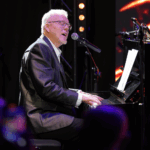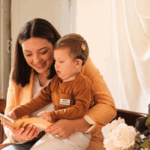
MED-EL
Published Jun 28, 2017
A Singer with Single-Sided Deafness: How I Returned to Music
Meet Johanna, a professional singer with single-sided deafness who received her cochlear implant in 2009 after losing her hearing from meningitis. She shares how the road to music appreciation is not always an easy one, and what challenges she faced along the way. Based in the US, she now works for MED-EL helping people around the world with a cochlear implant to once again appreciate music.

I Couldn’t Even Differentiate Between Wind and String Instruments
Due to single-sided deafness, I received my cochlear implant in 2009. In the first 3 months after activation, my experience with understanding music with a cochlear implant was disappointing. One of the first tests after my first fitting was a short musical test where I had to identify different instruments. This was an impossible task for me. I couldn’t even differentiate between wind and string instruments. Maybe you can imagine how frustrating this was for a musician and singer.
During my first two years with the CI, if someone asked me what the most important improvements were and how I would describe the difference to the ear with normal hearing, I always gave this response:

The most important benefit for me personally is that I got back fully-fledged sound. I can now hear in stereo instead of mono. Whatever the CI was missing in terms of the naturalness of sound is compensated by my hearing ear and my brain.
Johanna
CI user and singer from Austria
This benefit is most apparent, and this effect hasn’t changed over the years. If I don’t have my audio processor on, it sounds as if everything around me has suddenly turned black and white. Fortunately, I only need to put my audio processor on to be able to hear the colors again.
Active Music Making Has a Greater Impact
When I received my cochlear implant there was no assigned rehabilitation program. But I was still studying music so in retrospect my musicianship—the music training I am used to doing— became the music rehabilitation for my cochlear implant. I first started training my cochlear implant alone by listening to audio books via direct audio input. Very soon I understood the content but had trouble differentiating the various voices of the characters, which all have their own specific timbre.

I listened to music with both ears most likely every day, sometimes for 10 minutes, other times for hours, depending on my mood and circumstances. I think it’s important to force yourself a little but not too much.
Listening to music has various functions for me in daily life. I listen to relax, dream, distract, motivate, dance but also to analyse the details I hear, which demands higher attention. In these cases I listen with a higher awareness, focusing on single details such as a particular melody line. This kind of listening required many repeats, sometimes just of a 10 second segment. But I would not only listen to it, I would also repeat it in my head, or even sing the melody.
When I received my cochlear implant I still had eighteen months to go before completing my studies. During that time I had regular singing lessons once a week as well as piano lessons. Research has shown that active music making has a greater impact on the learning outcome.
Working as a Performer With a CI
In the summer of 2011 I worked as a performer in the musical “Blues Brothers” at an open-air production in Germany. Performing together on a huge stage under the open sky were a six-piece amplified band, a 10-actor cast, and six female background singers. Each person had to fill-in all musical numbers. Apart from two parts I was one of the ‘background girls’. I didn’t think about it before or worry that I may have problems performing my part.
I first realized what my CI really makes possible when the batteries suddenly died and the CI shut off during the dress rehearsal. I was lost. I could hear neither myself nor the other singers or instrumentalists. For some reason, it was impossible for me to orient myself. To be honest, I was a little shocked at how great the difference was. After that episode, a sound engineer always carried batteries in his bag to replace mine if necessary.

“I don’t have to worry any more if I can work as a performer.”
You can’t imagine how happy I am that due to my CI, I don’t have to worry any more if I can work as a performer and vocalist. In 2011, I tested out my music recognition abilities with musicologist Dr. Georgios Papadelis. I was very surprised that I could recognize the sound of every instrument, even the difference between a viola and a violin, which I expected to be most difficult to distinguish. I had learned to identify instruments with my CI, a task that wasn’t possible two years ago.
Hearing Music with a Cochlear Implant
Of course there are differences in quality between natural hearing and hearing through a cochlear implant. Music sounds a little blocked and confined as if you are sitting in a room and want to listen to music, but the musicians are playing in the room next door. But for me, the fact that I can hear the music means a great deal.

“I know that a lot of people are working hard to make music better for me and other CI users.”
Initially, the CI completed the picture—it broadened the perspective. Today I can also hear the details that are so important to me as a musician. I am eager to find out what further progress the future holds.
8 Years With Cochlear Implants: My Key Insights for Singers
In 2017 I am celebrating eight years of cochlear implantation! It is very interesting to review what I wrote 5 years ago about my early experiences with the CI.
Now based on these eight years of experience and everything I have learned working in the CI field, particularly on the topic of music, I would like to summarise what I think is important for a singer:
- My intonation as a singer, which was negatively impacted due to the hearing loss, was re-established because of the CI because I was able to hear with two ears again.
- When I first received the CI, I could not perceive any music. It took time and training but it changed—it’s possible!
- From the very beginning, although I could not perceive music with the CI alone, I always preferred listening to music with both ears (with the CI). The CI reconnected me with the room where music happens with its full sound and nuances, and with that to a more emotional experience.
- As a performer I realised how essential the CI is for me and how great the difficulties would be if I had to perform without the CI. As a musician you have to be able to perform various different tasks at once. It’s not only about mastering your own performance but also following the rhythm precisely, picking up the tiniest cues from your fellow performers and reacting in time to the unforeseen.Having a CI makes it easier to orientate through the music and coordinate all those things, which results in a much better performance.
Thanks, Johanna!
References

MED-EL
Was this article helpful?
Thanks for your feedback.
Sign up for newsletter below for more.
Thanks for your feedback.
Please leave your message below.
Thanks for your message. We will reply as soon as possible.
Send us a message
Field is required
John Doe
Field is required
name@mail.com
Field is required
What do you think?
© MED-EL Medical Electronics. All rights reserved. The content on this website is for general informational purposes only and should not be taken as medical advice. Contact your doctor or hearing specialist to learn what type of hearing solution suits your specific needs. Not all products, features, or indications are approved in all countries.

MED-EL

MED-EL


